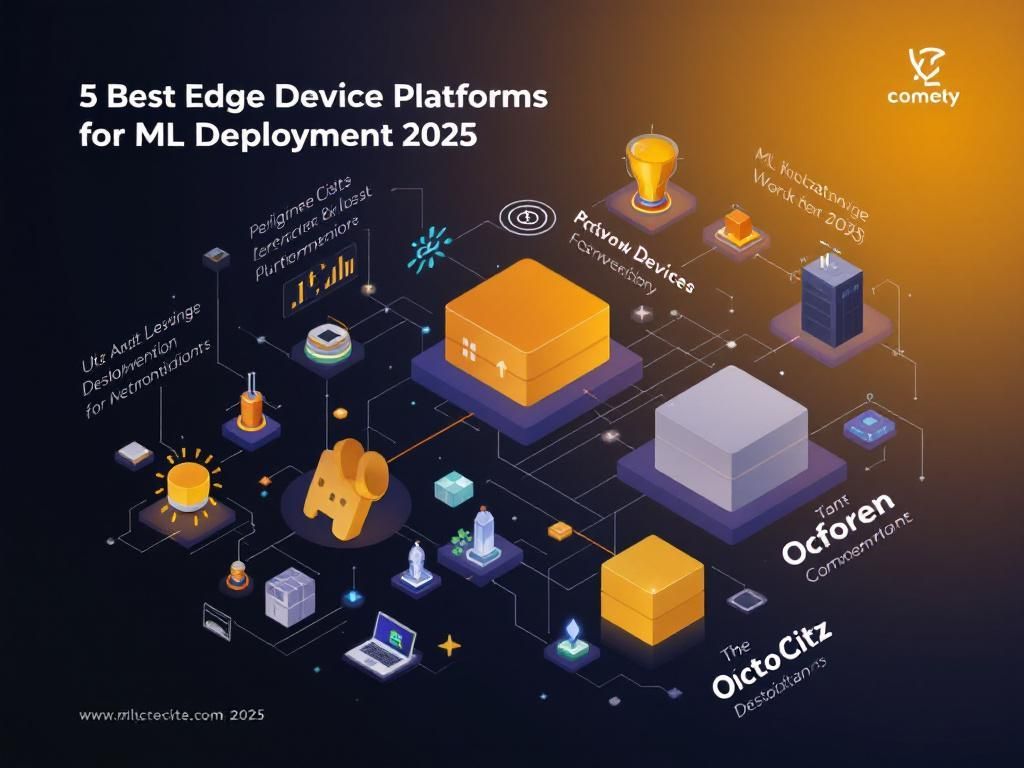As the demand for real-time data processing escalates, edge computing has emerged as a critical framework in the deployment of machine learning (ML) applications. The convergence of artificial intelligence (AI) and edge computing is reshaping industries, empowering devices to process data locally rather than relying on centralized cloud servers. By 2025, various edge device platforms are expected to gain prominence, each offering unique features that cater to different aspects of ML deployment. This article explores the best edge device platforms that are set to lead the charge in ML deployment, enabling businesses to harness the power of AI at the edge.
Understanding Edge Computing and ML
Edge computing refers to the processing of data near the source of data generation, eliminating latency and bandwidth issues commonly associated with cloud computing. In the realm of machine learning, this means that algorithms can analyze data in real-time, facilitating faster decision-making processes. Key advantages of deploying ML on edge devices include:
- Reduced Latency: Processing data closer to the source enhances response times.
- Increased Bandwidth Efficiency: Less dependency on the cloud reduces data transfer costs.
- Improved Privacy: Sensitive data can be processed locally, minimizing exposure to external threats.
- Enhanced Reliability: Edge devices can operate independently, ensuring continued functionality even with intermittent cloud connectivity.
Key Considerations for Choosing Edge Device Platforms
Performance and Scalability
When selecting an edge device platform, performance and scalability are crucial factors. The platform should be capable of handling complex models and large datasets while providing scalability options for future growth.
Integration and Compatibility
Compatibility with existing infrastructure and ease of integration with various sensors and IoT devices is essential for seamless deployment.
Security Features
Given the sensitivity of the data processed at the edge, robust security features are a must. Look for platforms that offer encryption, access controls, and secure communication protocols.
Leading Edge Device Platforms for ML Deployment in 2025
1. NVIDIA Jetson
NVIDIA Jetson is a leading platform in the field of AI at the edge, known for its powerful GPU capabilities. Key features include:
- Support for deep learning frameworks such as TensorFlow and PyTorch.
- High-performance computing power, capable of handling complex ML algorithms.
- A variety of modules, including Jetson Nano, Jetson TX2, and Jetson Xavier, catering to different application needs.
2. Google Coral
Google Coral is an edge device platform that focuses on on-device AI processing with minimal latency. It features:
- Dedicated Edge TPU (Tensor Processing Unit) for accelerated ML inference.
- Compatibility with TensorFlow Lite, allowing for streamlined model deployment.
- A range of devices, including development boards and USB accelerators.
3. Microsoft Azure IoT Edge
Microsoft Azure IoT Edge extends Azure’s cloud capabilities to edge devices, making it a versatile choice for businesses already invested in the Azure ecosystem. Notable features include:
- Containerized application deployment for easy scalability.
- Integration with Azure Machine Learning for advanced model management.
- Comprehensive security features, including device authentication and secure communication.
Comparative Analysis of Edge Device Platforms
| Platform | Key Features | Target Use Cases |
|---|---|---|
| NVIDIA Jetson | High-performance GPUs, deep learning support | Robotics, smart cities, video analytics |
| Google Coral | Edge TPU, TensorFlow Lite compatibility | Smart cameras, predictive maintenance |
| Microsoft Azure IoT Edge | Containerized apps, Azure integration | Industrial IoT, smart building management |
Emerging Technologies Shaping Edge Device Platforms
AI Accelerators
The integration of AI accelerators in edge devices boosts computational efficiency, allowing for more sophisticated ML models to run in real-time. These accelerators significantly reduce energy consumption while enhancing performance, a critical aspect for battery-operated devices.
5G Connectivity
The rollout of 5G technology is set to revolutionize edge computing by providing ultra-low latency and high bandwidth. This advancement will enable more robust edge applications, particularly in sectors such as healthcare and autonomous vehicles.
Edge-as-a-Service (EaaS)
The emergence of EaaS models allows businesses to leverage edge computing without significant upfront investments. This cloud-based approach provides flexibility, enabling companies to scale resources based on demand.
Challenges in ML Deployment on Edge Devices
Resource Limitations
Many edge devices have limited processing power and memory compared to cloud servers. This limitation necessitates careful model optimization to ensure efficient deployment.
Data Management
Managing data across distributed edge devices can be complex, requiring robust data governance frameworks to ensure data integrity and compliance with regulations.
Security Concerns
While edge computing enhances privacy by processing data locally, it also introduces new security risks. Regular updates and security patches are essential to safeguard against vulnerabilities.
Conclusion
As we approach 2025, the landscape for edge device platforms in ML deployment is rapidly evolving. Companies seeking to capitalize on the benefits of edge computing must carefully evaluate their options based on performance, scalability, integration, and security features. The platforms discussed here, such as NVIDIA Jetson, Google Coral, and Microsoft Azure IoT Edge, represent just a glimpse into the future of AI at the edge. By staying informed and adaptable, businesses can effectively harness the potential of these technologies to drive innovation and efficiency in their operations.
FAQ
What are the best edge device platforms for machine learning deployment in 2025?
Some of the top edge device platforms for machine learning deployment in 2025 include NVIDIA Jetson, Google Coral, Amazon AWS IoT Greengrass, and Intel OpenVINO. These platforms offer robust support for ML algorithms and provide efficient processing capabilities.
How do edge device platforms improve machine learning performance?
Edge device platforms enhance machine learning performance by processing data closer to the source, reducing latency, and minimizing bandwidth usage. This enables real-time data analysis and faster decision-making.
What factors should I consider when choosing an edge device platform for ML?
When selecting an edge device platform for machine learning, consider factors such as processing power, compatibility with ML frameworks, connectivity options, power consumption, and cost-effectiveness.
Can I deploy deep learning models on edge devices?
Yes, many edge device platforms support the deployment of deep learning models. Platforms like TensorFlow Lite and PyTorch Mobile are specifically designed to optimize deep learning applications for edge environments.
What industries can benefit from machine learning on edge devices?
Industries such as healthcare, manufacturing, automotive, and smart cities greatly benefit from machine learning on edge devices. These applications include predictive maintenance, real-time monitoring, and enhanced automation.




